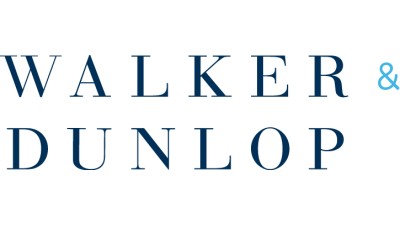With Vaccine On Horizon, A New Challenge For Health Systems: Who Gets It First?

Amid a surge in hospitalizations in nearly every U.S. state, the news of two highly effective coronavirus vaccines has become a bright spot in a bleak landscape for healthcare systems. With the first round of vaccines likely to arrive on hospitals’ doorsteps in the next few months, healthcare administrators face a new challenge: deciding who gets the vaccine first.
Many states have already laid out tiering systems to determine which groups should receive a vaccine. The current consensus is that the first group to be inoculated should be frontline healthcare workers like ICU nurses, respiratory therapists and physicians who treat patients with COVID-19.
But even among that small group, there are looming questions about how to distribute the vaccine.
“Say there are 200 doses in the first batch, do we give a dose to one clinician in every one of our ICUs, or do we inoculate all the staff in a single central hospital?” UCHealth CEO and President Elizabeth Concordia said on the Walker & Dunlop Walker Webcast.
Concordia, who oversees a healthcare system with over 90 facilities across Colorado and affiliates in Wyoming and Nebraska, said that health systems are planning on using the distribution of vaccines to their own staff as a test run for how to distribute them to a wider population.
She described how UCHealth has already begun distributing questionnaires to its staff about their preferences in taking a vaccine, and how it is setting up databases to track who has been inoculated and when. Keeping tabs on thousands of UCHealth employees is daunting enough, but the real tests will be rolling a vaccine out to millions of Coloradans and convincing a skeptical population to get the vaccine and — in the case of vaccine candidates from both Pfizer and Moderna — return for a second dose three weeks later.
“There are logistical challenges, but we’re cautiously optimistic,” Concordia told Walker & Dunlop CEO Willy Walker on the webcast. “Healthcare providers know how to distribute vaccines amongst our own. And we’re learning how to efficiently coordinate for a public health effort that is going to be bigger than anything we’ve seen before.”
After healthcare workers, the next groups to be vaccinated are likely to be vulnerable populations like the elderly and those with compromised immune systems. Concordia said that immunizing the most vulnerable will help to free up low-risk populations to return to some state of normalcy, allowing schools and businesses to reopen much more safely.
Healthy, young, nonessential workers are likely to be the last group immunized, but Concordia estimated that by the end of Q2 2021, even low-risk populations would be able to receive a vaccine for the coronavirus. But until a wide swath of Americans have received the vaccine, and even long after, adherence to mask-wearing, hand-washing and other simple virus safety protocols will remain crucial to beating the spread of the coronavirus, Concordia said.

There are still enormous hurdles to distributing the coronavirus vaccine, and the vaccines farthest along in development both have to be shipped and stored at frigid temperatures — Moderna’s at negative 4 degrees Fahrenheit, and Pfizer’s at around negative 90 degrees Fahrenheit. Concordia said that while UCHealth already has freezers that reach those temperatures in some of its hospitals, it has purchased more in the expectation of an influx of doses of the vaccine.
UCHealth is also sending some of its new freezers to rural hospitals, which it hopes to use as outposts in helping to distribute the vaccine, to ensure that populations that live farther from urban centers like Denver can still get reliable access to a vaccine. In more rural areas, Concordia said, it may not make sense to ask healthcare employees which vaccine manufacturer they would like to receive — the doses are so precious, they should just be used as quickly and effectively as possible.
Both Moderna’s and Pfizer’s vaccines rely on synthesized mRNA, a single strand of genetic material, encased in a protective sheath of lipids. When injected, the mRNA molecule induces cells to churn out copies of the coronavirus’s distinct “spike protein,” generating an immune response. But numerous other vaccines are under development that grant immunity using other biochemical pathways. By the end of 2021, Concordia said, there may be a whole landscape of different coronavirus vaccines, some of which may not need to be kept ultra-cold or require a second dose.
The rush to find a coronavirus vaccine is not just about ending COVID-19, it’s also about ending other public health crises that have formed in the wake of the pandemic. While Americans are cooped up in their homes, rates of domestic violence have risen, while childhood nutrition and education have suffered. Afraid to enter a hospital, cancer patients have been putting off radiation and chemotherapy, and mental and behavioral health problems are on the rise.
“We’ve committed millions and millions of dollars to free virtual health sessions and community reach out,” Concordia said. “Especially during the holiday season, anything that people can do to help, to reach out to people who are alone, is appreciated. That’s a simple and valuable intervention.”
On Nov. 25, Walker will host a conversation about conflict resolution with Harvard Business Review contributing editor Amy Gallo and Wharton professor Sigal Barsade. Register here for the event.
This feature was produced in collaboration between the Bisnow Branded Content Studio and Walker & Dunlop. Bisnow news staff was not involved in the production of this content.

